The Ripper’s London Attacks #10
Jacqueline Ansell-Lamb and Barbara Mayo
In their latest article regarding attacks that were probably committed by “Yorkshire Ripper” Peter Sutcliffe but for which he was never charged, Tim Hicks and Chris Clark examine the murders of Jacqueline Ansell-Lamb and Barbara Mayo. Both murders were linked by the police. The brutal slaying of Barbara Mayo was the largest murder investigation in the history of the police service up to that time, only to be eclipsed by the Yorkshire Ripper investigation.
~~~~~
by TIM HICKS & CHRIS CLARK
~~~~~
Introduction
Following on from the lead article in this series, which identifies the routes Sutcliffe used in his work and his personal life, this article considers the cases of Jacqueline Ansell-Lamb and Barbara Mayo. They have been grouped together in this article because:
- They were both hitch hikers enticed into a vehicle on the M1 at Hendon.
- Route 6, the direct route home to Bradford from Sutcliffe’s sister-in-law Marianne’s house at Alperton uses the A406, M1 and M62 took Sutcliffe through Hendon.
- Route 9, the route home to Bradford from Sutcliffe’s sister-in-law Marianne’s house at Alperton via Manchester, uses the M1, M6, or M1, A50, M6; then M50, M62 goes past the Jacqueline Ansell-Lamb deposition site.
- The police have linked the two murders.
- Sutcliffe was not previously known to have been involved with hitch hikers. This will have excluded Sutcliffe from being considered as a suspect in the murder of Jacqueline Ansell-Lamb and Barbara Mayo on the grounds that it was completely inconsistent with his known modus operandi and out of his geographical area of operations. It will also have excluded him other murders of hitch hikers. The NYE has recently developed two new witnesses who have confirmed that Sutcliffe picked up hitch hikers in both his car and his lorry. These are Child A (NYE article here) who was picked up at Hammersmith and Child D (NYE article here) who was picked up in Bradford. It is now clear that hitch hikers were within Sutcliffe’s modus operandi and that he was routinely picking up hitch hikers in a much wider geographical area than he was previously thought to have operated in. This means he should now be considered as a suspect in the murders of Jacqueline Ansell-Lamb and Barbara Mayo. In a wider context, he should also be considered as a suspect in all other hitch hiker murders and disappearances within the period 1963 – 1981. The NYE has passed this new information to the National Crime Agency and West Yorkshire Police.
Jacqueline Ansell-Lamb 08/03/70. Abducted at M1 Hendon and found murdered in Cheshire. Cheshire Constabulary (Car)
On the 24th of March 1970, a farmer stumbled across the body of a young woman on the edge of Square Wood near the village of Mere, Cheshire. She had been partially undressed, her mini-skirt had been removed and the clothes placed neatly next to her. Her maxi length coat had been removed with force, but had been used to cover the body.
Illustration 2
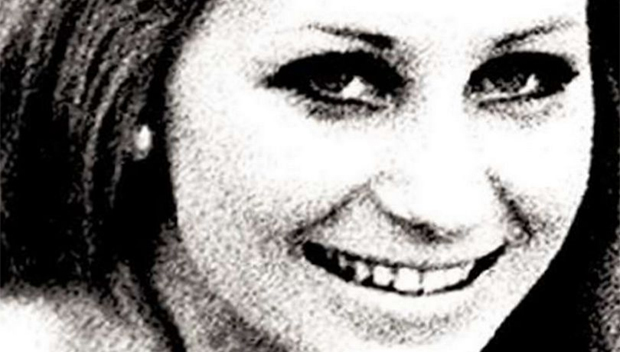
Jacqueline (Jacci) Ansell-Lamb
The post mortem identified that the victim was a teenager; she had been severely beaten around the back of the head and sexually assaulted. Around her neck were marks from a ligature. The cause of death was ligature strangulation with a piece of knotted rope or cable. Her name was Jacqueline Ansell-Lamb, known as Jackie. She was eighteen years old, worked as a legal secretary and lived in a shared flat in Manchester.
She had spent the weekend in London and her boyfriend last saw her on Sunday the 8th of March when he dropped her off at the M1 at Hendon at 2.30 p.m. so she could hitch a ride to Manchester. Her flatmate had reported her missing the next day.
Detectives from Cheshire Constabulary tracked her movements as far as the M1 at Hendon and systematically eliminated her boyfriends as suspects. Thereafter, understandably, the case went cold.
Why the authors believe Sutcliffe should be considered as a suspect
Sutcliffe’s access to the abduction point
- Sutcliffe’s route home to Bradford on a Sunday afternoon, after a weekend visit to London would take him along the M1. He was not a lorry driver at this time and was using his car.
Abduction point and route
- Sutcliffe would be at Hendon between 2.00 p.m. to 7.00 p.m. according to what time he wanted to get home.
- The killer probably followed the route M1, M6 then A556, which leads from the M6 to the M62 and Manchester. The deposition site was just off A556. The killer may have stopped at Square Wood using the excuse to his victim that he needed to urinate.
- The authors believe Sutcliffe was returning home to Bradford on his own, intending to use Route 6, the direct route home to Bradford from Marianne’s house at Alperton which took him through Hendon. He saw Jackie at Hendon and asked her if she wanted a lift and where she was going. When she said Manchester, he said he was going there and she got in to his car.
- Sutcliffe had a very good knowledge of routes and would have been able to plan a route to Manchester, identify a spot to make his attack and an exit route while he was driving. He would probably have been past the deposition site many times while travelling.
- He then changed his route to Route 9, the route home to Bradford from Hendon via Manchester, which goes past the Jacqueline Ansell-Lamb deposition site.
Deposition site
- The body was found in a secluded rural area.
- The victim’s clothes were found nearby. Unusually they were piled neatly.
Weapons used
- The victim had been severely beaten about the back of the head, possibly with a hammer. Sutcliffe’s weapon of choice.
- A rope or cable ligature with knots in it had been used. Sutcliffe had a rope ligature with knots in it on him, when he was arrested. Knotted ligatures were used in the murders of Kay O’Connor, Gloria Booth, Wendy Sewell in September 1973, Marguerite Walls in August 1980 and attempted murder of Uphadya Bandara in September 1980.
Body
- The victim was partially undressed. Trousers removed and placed beside her,
- As with the cases of Barbara Mayo, Gloria Booth, Marie Burke, Wendy Sewell, Eve Stratford, Wilma McCann, Emily Jackson, Elizabeth Parravicini, Carol Wilkinson, Josephine Whitaker, Sally Shepherd and Patricia Morris, the body was posed.
- The victim had been sexually assaulted.
- In the murders of Jacqueline Ansell-Lamb, Barbara Mayo, Caroline Allen, Irene Richardson, Patricia Atkinson, Jean Jordan, Yvonne Pearson, Helen Rytka, Vera Millward, “Cockley Cley Woman”, Barbara Leach and Marguerite Walls, and the attempted murder of Marie Burke the victim was fully or partially covered.
Escape route home
- The murderer left the scene undetected.
- The deposition site was close to the A556, which leads to the M62 and Manchester. However, the M62 is also the most convenient route from the deposition site to Sutcliffe’s home, with a journey time of just over an hour. The deposition site is consistent with Sutcliffe’s choice of a location that allows a fast exit from the scene of the crime to a motorway and home.
In response to a request for a media statement, Detective Chief Inspector Simon Blackwell, from the Cheshire Police Major Crime Directorate, said:
“Jacqueline was found murdered in woods near to junction 20 of the M6 in Cheshire.”
“While a significant amount of time has passed since her death we will always be committed in securing justice for Jacqueline and her family.”
“We will review any new information that comes to light and I would encourage anyone who may know what happened to Jacqueline to contact us on 101.”

Map showing abduction and deposition sites of Jackie Ansell-Lamb and Barbara Mayo
relative to Sutcliffe’s route home from his sister-in-law’s at Alperton
Key
1. Murder and deposition of Jackie Ansell-Lamb March 1970 Mere Cheshire, abducted from M1 Hendon, London.
2. Murder and deposition of Barbara Mayo October 1970 Ault Hucknall Derbyshire, abducted from M1 Hendon, London.
3. Deposition site of Marie Burke left for dead April 1972, Hemel Hempstead Road St Albans. Abducted from M1 Brent Cross London. Map shows links between M1 and A1 through St Albans that Sutcliffe used at the start of the Easter holidays during Sonia’s second year of teacher training.
4. Murder and deposition site of Judith Roberts June 1972 Wigginton Staffordshire. One of the greatest miscarriages of justice in English legal history. A seventeen year old soldier Andrew Evans spent twenty years in jail for a murder he did not commit before being released. The real murderer has never been found. At this time Sonia Sutcliffe was suffering from mental illness and was admitted to Bexley Hospital, Peter Sutcliffe travelled down from Bingley to see her using this route. The authors believe that Sutcliffe is a credible suspect for this murder. Chris Clark can be seen discussing the murder in this interview here.
Barbara Mayo was a twenty-four-year-old student teacher living with her boyfriend in Shepherds Bush. On Monday the 12th of October 1970 she went to Hendon to hitch hike to Catterick at about 8.30 a.m. Her boyfriend David Pollard reported her missing that day, when she failed to arrive in Catterick.
Six days later on Sunday the 18th of October a honeymooning couple found Barbara’s body in bushes on the edge of a wood in Ault Hucknell in Derbyshire. She was faced down, with her clothing in disarray and covered by a coat. She had been beaten about the head and strangled with a ligature. It was never established if she had been murdered at the deposition site.
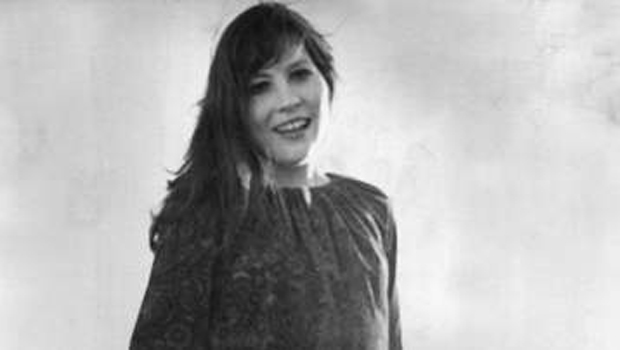
Barbara Mayo 12/10/70. Abducted at M1 Hendon and found murdered in Derbyshire.
Derbyshire Constabulary assisted by Metropolitan Police Scotland Yard. (Car)
In the days before the amalgamations of smaller Borough Forces into the large County Forces we have today, a County Force could call in Scotland Yard to lead complex or major investigations. This was because the Metropolitan Police had a large pool of experienced detectives that was unavailable to the smaller forces. A Metropolitan Police Detective Superintendent would be sent to lead the County Force investigation, accompanied by a Detective Sergeant who would run the incident room.
The similarities with the Jacqueline Ansell-Lamb case resulted in Derbyshire Police calling in Scotland Yard. Accordingly detectives from the Metropolitan Police led the Derbyshire Police investigation. Such was the influence of Scotland Yard that they were also able to liaise and oversee the Cheshire Constabulary investigation into the murder of Jacqueline Ansell Lamb.
The investigation quickly eliminated David Pollard, interviewed 126,300 people, checked the records of 28,000 criminals and investigated more than 76,000 leads. It became the largest investigation in the history of the police service up to that time. A reconstruction was staged and colour television was used for the first time in an appeal for information.
Tim writes:
“I remember the Barbara Mayo case very well. It was a major investigation; the press coverage at the time was intensive and sustained. In 1972 I was working in an HGV vehicle moving office furniture. You couldn’t go into a transport café on the M1 or in North London without seeing a poster from the Mayo investigation appealing for information. Derbyshire Constabulary really worked hard to resolve the case. It was one of the highest profile cases in the UK in the 1970s until the Donald Nielson murders. Derbyshire Constabulary have done a very good job of keeping it in the public eye ever since.”
Nevertheless, the investigation quickly ran into a brick wall. The authors believe that a major factor in its failure was its focus on two sightings of Barbara in Great Kimberley, which is one mile from the M1 and about twenty miles from Ault Hucknall. A local butcher said that a woman fitting Barbara Mayo’s description had bought some faggots from his shop. Another witness said she had seen a woman fitting Barbara Mayo’s description getting in to a Morris Minor 1000 Traveller driven by a clean shaven man at about 4.00 p.m.
In correspondence with Chris, in 2014 – 2016, David Pollard wrote:
“As you know, the most concerning aspect of Barbara’s murder is the massive hunt for the Morris Traveller and its driver which, as best it is possible to see, was entirely misdirected. This skewed the whole of the investigation and perhaps a number of others.
Where there is evidence is in the presumed sighting with the Morris Traveller in Kimberley. If there is a plausible scenario for this, I haven’t been able to find it. Setting off at maybe 8:30 in the morning it doesn’t take a pretty young woman hitching on a busy motorway in bright daylight until after four o’clock in the afternoon to travel 120 miles.
Even if there were to be some explanation for this, how would she have reached Catterick from Kimberley before the garage closed?
Why would she have taken a detour to buy a couple of faggots? It is well-nigh impossible that the Kimberley sighting was of Barbara. There were no faggots in her stomach contents, only the breakfast she had before leaving home.
But this supposed and highly publicised sighting certainly gave the murderer a clear run. Public attention was directed to the wrong time, the wrong place, the wrong vehicle and the wrong photofit.”
The authors agree with David Pollard’s assessment. Derbyshire Constabulary detectives checked more than 72,000 Morris Minor Traveller’s and interviewed their drivers. The effort put into these two sightings distracted the investigation from developing more useful lines of enquiry. The driver of the van was clean shaven, whilst Peter Sutcliffe had been bearded since at least 1969. So this erroneous sighting resulted in Sutcliffe being prematurely ruled out as a suspect in the murder of Barbara Mayo.
Another red herring that threw off the investigation was that Derbyshire and Scotland Yard detectives originally suspected Barbara’s murder as being drug related. This was confirmed to Chris by one of the original members of the Ripper investigation team Sergeant Andrew Laptew:
“During 1978 whilst making enquiries into the murder of a boy scout in Bradford (Paul Kingsley) my enquiries took me to the Flotex carpet factory in Codnor Derbyshire. I had occasion to visit the Barbara Mayo Incident Room in Derby. The consensus of opinion was that Barbara was murdered as a result of a drugs dealing dispute. Therefore the circumstances surrounding her death were never linked to the Yorkshire Ripper (Sutcliffe).”
Subsequent developments
Public interest in the Barbara Mayo case remained high. It was reviewed and re-opened on a number of occasions:
- In 1990 DNA of an unknown man was extracted from the exhibits that had been stored.
- In 1996, Keith Hellawell’s “Silent Victims” documentary appeared to attribute both murders and the attempted murder of Marie Burke in April 1972 to Sutcliffe.
- In 1997, the murders of Barbara Mayo and Jacqueline Ansell Lamb were linked with that of Wendy Sewell by former Matlock Mercury Editor and award winning journalist Don Hale. Hale had investigated the murder of Wendy Sewell, in Bakewell Derbyshire in 1973 and showed that Stephen Downing had been wrongly convicted. Don Hale notified the police of his conclusions, but they were ignored.
- In 1997, this Warrington Guardian article and this Independent article – both based on police sources – reported that a fingerprint had been found on Barbara Mayo’s clothing and that links with the murder of Jacqui Ansell-Lamb were being investigated. This followed a conference between Cheshire and Derbyshire Constabularies which identified similarities in 1990.
- In 2014, Chris Clark worked with Don Hale on the Wendy Sewell murder, article here. The evidence they uncovered proved irrefutably that Stephen Downing could not have murdered Wendy Sewell. Chris continued his research into the case and concluded that real the killer was Yorkshire Ripper Peter Sutcliffe.
- In 2017, this Nottingham Post article revealed that detectives from Operation Anagram were investigating the possibility that serial killer Peter Tobin was the murderer.
- In 2013, an article appeared alleging that detectives had used DNA to link the Barbara Mayo murder to the Jackie Ansell Lamb murder. This transpired to be one of many inaccurate stories claiming a DNA link. No DNA was obtained from Jacqueline Ansell-Lamb.
- The same 2013 article claimed that an advanced fingerprint search may extract a fingerprint which may identify Barbara Mayo’s murderer.
David Pollard wrote:
“The Manchester/Cheshire police in their 1990 re-investigation of Jackie Ansell-Lamb’s murder announced that it was almost certainly committed by the same person who murdered Barbara. There wasn’t a DNA profile then, the low-copy-number technique which provided the profile in Barbara’s case only being developed in 1996. As far as I know, no profile has ever been extracted in Jackie Ansell-Lamb’s case. The claims that one has seem to have come initially from a Reuter’s report which wrongly assumed that a DNA match had been obtained from the statement that the two murders were associated.
The 1990 re-investigation of Jackie Ansell-Lamb’s murder had confirmed that it was forensically linked to Barbara’s murder, but the technique which allowed the DNA profile to be obtained from a crime stain in Barbara’s case had not even been developed until 1996.
My best estimate is that the likelihood that the stain the police analysed was there before the crime is less than 1%. It’s not impossible that it arrived after Barbara’s body was found, for example if her clothes were taken out of the evidence store but again this isn’t likely. Clearly it’s not absolutely certain that the stain they analysed is associated with the crime, but the likelihood of a mismatch is, I think, really rather low.
In 1997 [Assistant Chief Constable] Don Dovaston promoted a press conference at which he announced that it had been possible to extract a DNA profile from a crime stain associated with Barbara’s murder; and consequently a team of up to 30 had been working full-time on a re-investigation.
Details of these cases have, so I understand, been loaded onto HOLMES. As I understand it there is little doubt that there is a common perpetrator.”
The detectives never publicly released whether or not Barbara had been sexually assaulted. Scotland Yard was also unable to help progress the parallel investigation into Jacqueline Ansell-Lamb by Cheshire Constabulary. So the case remained open and on file.
Derbyshire Constabulary will not release any information on the case, or confirm that it interviewed two men that were cannabis smugglers and took DNA from them. See FOI correspondence here.
Chris Clark and David Pollard can be seen discussing the similarities of the two murders in this interview here.
Why the authors believe Sutcliffe should be considered as a suspect:
Sutcliffe’s access to the abduction point
- For the first few weeks of the autumn of 1970, Peter Sutcliffe drove up and down the M1 to spend weekends with Sonia in London, staying at Marianne’s home in Alperton. He then moved to London, taking occasional jobs as a mechanic at a garage in Deptford South East London while he lived in bed and breakfast accommodation and a bedsit. He worked itinerantly in Yorkshire and Deptford until the end of 1971. He could easily have been travelling up the M1 to Bradford after a visit to Sonia and Marianne in Alperton
Abduction point and route
- Sutcliffe’s route home to Bradford after a visit to London would take him along the M1. He was not a lorry driver at this time and was using his car. Assuming an early start, he would be at Hendon at the same time as Barbara Mayo.
Deposition site
- The body was found in a secluded rural area.
- The victim’s clothes were found nearby. Her handbag was missing.
Weapons used
- The victim had been severely beaten about the back of the head, possibly with a hammer. Sutcliffe’s preferred method of attack.
- As with the cases of Lucy Tinslop, Jacqueline Ansell Lamb, Gloria Booth, Wendy Sewell, Rosina Hilliard, Kay O’Connor, Marion Spence, Patricia Morris, Marguerite Walls, and Upadhya Bandara, a ligature had been used.
Body
- As with the cases of Jacqueline Ansell-Lamb, Gloria Booth, Marie Burke, Wendy Sewell, Eve Stratford, Wilma McCann, Emily Jackson, Elizabeth Parravicini, Carol Wilkinson, Josephine Whitaker, Sally Shepherd and Patricia Morris, the body was posed.
- In the murders of Jacqueline Ansell-Lamb, Barbara Mayo, Caroline Allen, Irene Richardson, Patricia Atkinson, Jean Jordan, Yvonne Pearson, Helen Rytka, Vera Millward, “Cockley Cley Woman”, Barbara Leach and Marguerite Walls, and the attempted murder of Marie Burke the victim was fully or partially covered.
Escape route home
- The murderer left the scene undetected.
- Sutcliffe’s fastest route to home in Bradford was along the M1. The deposition site was just over two miles from the M1, close to a motorway. The deposition site is consistent with Sutcliffe’s choice of a location that allows a fast exit from the scene of the crime to a motorway and home.
DNA evidence
As David Pollard points out above, Sutcliffe has been eliminated on the basis that it is not his DNA on the body. This is a misuse of DNA evidence.
On the 10th of April 1995, the world’s first national DNA database came into operation and was hailed by Home Secretary Michael Howard as the biggest breakthrough in the fight against crime since fingerprints. During 1997 a trawl was made on prisoners serving life sentences for murder to have a sample of their DNA taken and uploaded onto the NDNA Data Base. However, Sutcliffe was a prisoner at Broadmoor and the Home Office has consistently refused to confirm if his DNA was taken as part of this exercise. In 2017 he was returned to the prison service at HMP Frankland and it is to be presumed that his DNA was sampled then.
However, it is possible that:
- If he was sampled in 1997, the sample was contaminated, either at the time of sampling, or subsequently.
- The DNA sample taken from Barbara Mayo could be from someone that was not the killer.
- Barbara Mayo’s clothes could have become contaminated in storage and the stain the DNA sample was taken from could have been applied while her clothes were in storage.
- The DNA could be Sutcliffe’s and not linked to him because he may have been a non-secretor or even a human chimera.
Fingerprint evidence
Sutcliffe’s fingerprints would have been taken when he was arrested in 1981 and will be on file. However, it is possible that if indeed a fingerprint was obtained from Barbara Mayo’s clothes or body using modern techniques:
- The fingerprint could be from someone that was not the killer.
- Barbara Mayo’s clothes could have become contaminated in storage and the fingerprint could have been left while her clothes were in storage.
- Any fingerprint extracted may not have enough individual points of reference to be used as the basis for a fingerprint match.
A spokesperson for Derbyshire Constabulary stated:
“There is no evidence to connect Peter Sutcliffe to the murder of Barbara Mayo. Unsolved cases such as this are regularly reviewed and when new leads or new evidence comes to light, we pursue those lines of inquiry.”

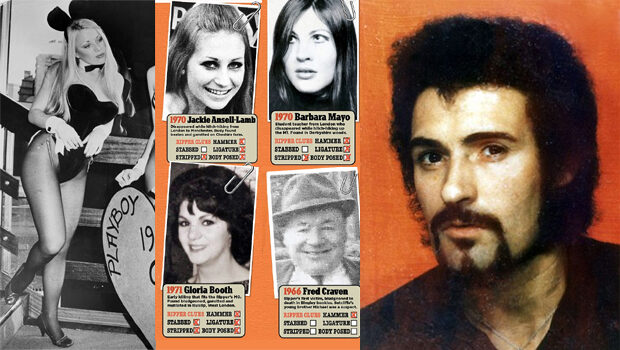
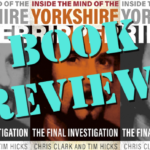
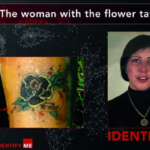
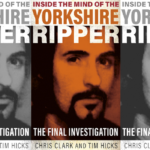
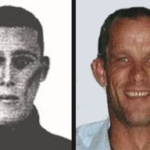
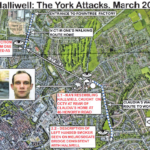
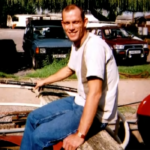



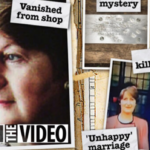















Comments are closed.